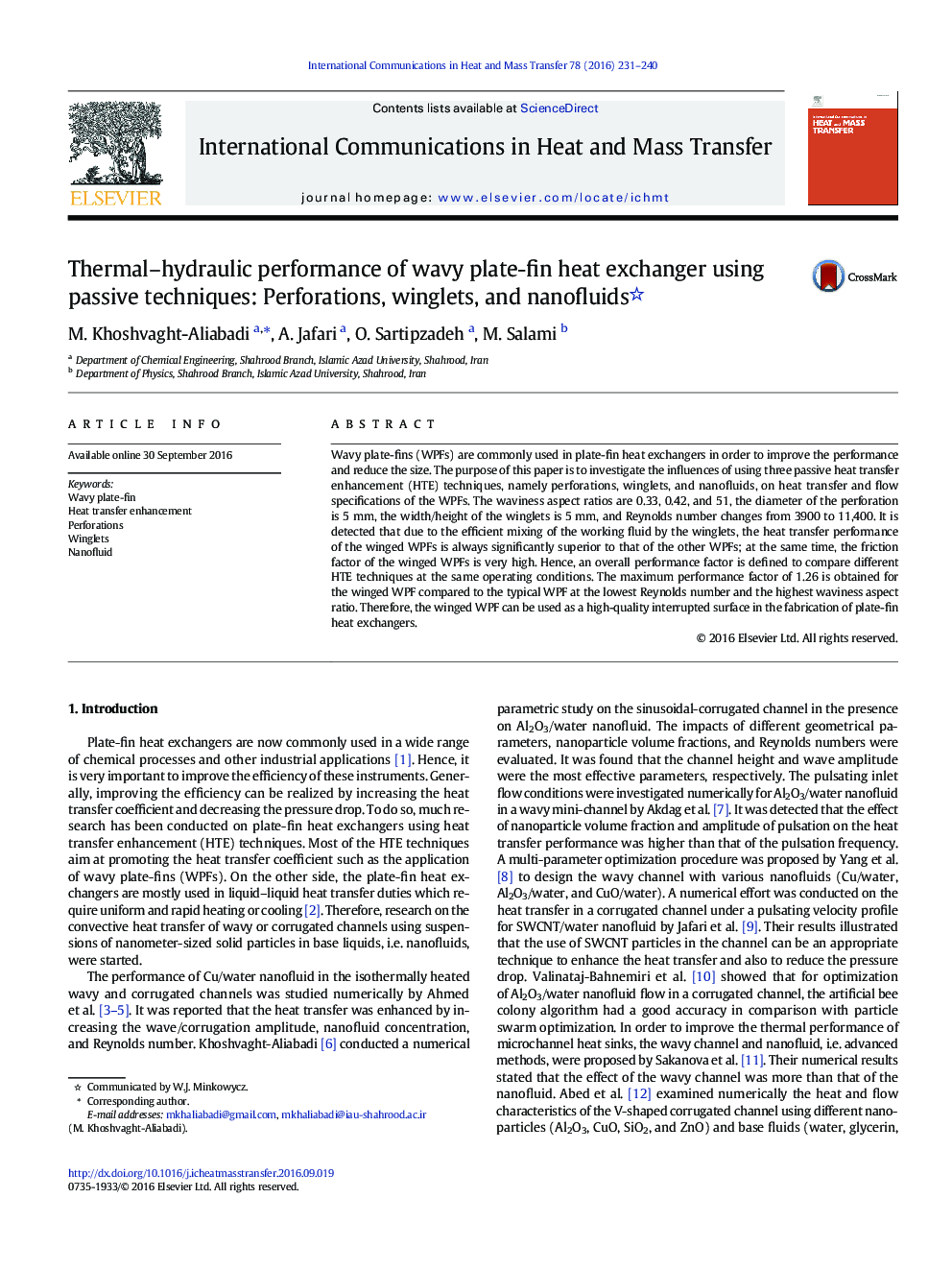| Article ID | Journal | Published Year | Pages | File Type |
|---|---|---|---|---|
| 4993088 | International Communications in Heat and Mass Transfer | 2016 | 10 Pages |
Abstract
Wavy plate-fins (WPFs) are commonly used in plate-fin heat exchangers in order to improve the performance and reduce the size. The purpose of this paper is to investigate the influences of using three passive heat transfer enhancement (HTE) techniques, namely perforations, winglets, and nanofluids, on heat transfer and flow specifications of the WPFs. The waviness aspect ratios are 0.33, 0.42, and 51, the diameter of the perforation is 5Â mm, the width/height of the winglets is 5Â mm, and Reynolds number changes from 3900 to 11,400. It is detected that due to the efficient mixing of the working fluid by the winglets, the heat transfer performance of the winged WPFs is always significantly superior to that of the other WPFs; at the same time, the friction factor of the winged WPFs is very high. Hence, an overall performance factor is defined to compare different HTE techniques at the same operating conditions. The maximum performance factor of 1.26 is obtained for the winged WPF compared to the typical WPF at the lowest Reynolds number and the highest waviness aspect ratio. Therefore, the winged WPF can be used as a high-quality interrupted surface in the fabrication of plate-fin heat exchangers.
Related Topics
Physical Sciences and Engineering
Chemical Engineering
Fluid Flow and Transfer Processes
Authors
M. Khoshvaght-Aliabadi, A. Jafari, O. Sartipzadeh, M. Salami,
